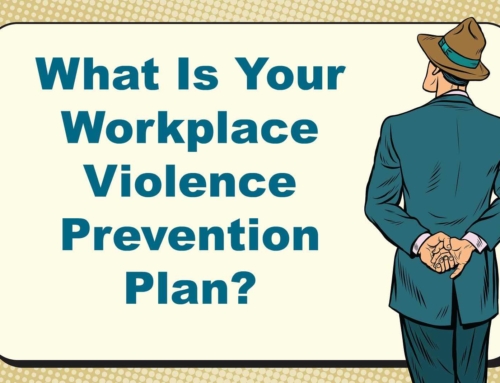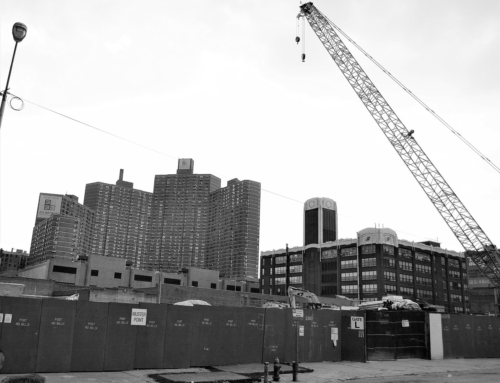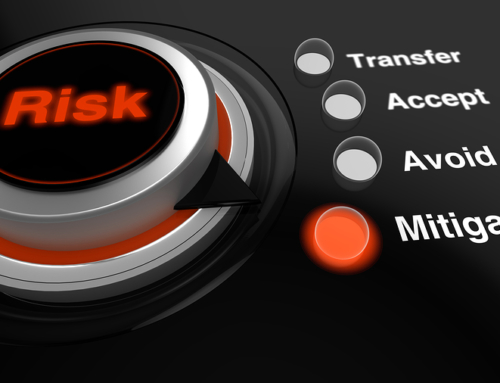Incidences of violence in the workplace are situations that affect the personal safety of you and your fellow workers. You will want to use workplace violence prevention measures to make sure you are safe and do not experience any “near misses”, like in some of these other hazardous situations:
- You decide to drive to the grocery store on a snowy day, but once you’ve driven a few minutes, you realize the roads are a lot icier than you thought.
- You find yourself in a situation at work, all alone, with an unruly customer.
- You decide to go on a hike, but you’ve somehow gone off trail and have no map.
“Whoops,” may be your frivolous response while reading these whilst safe and sound in your office or cozy café, but what would you actually be thinking in these situations?
Now let’s assume these situations happened and you’ve made it out of each situation… by the skin of your teeth.
Your heart is racing, you think to yourself, “How on earth did I let myself get into this mess?”
Then, when your heart rate has returned to normal and you can think straight, you tell yourself, “Well, I’m not going to let that happen ever again.”
Whether it be a dire circumstance, or something not quite as dramatic, we’ve all experienced this at one time or another—
“Near misses” happen all the time.
No one has gotten hurt. Nothing is damaged. But we came so darn close!
Well, we can’t let an experience like this go by without learning anything, right?
Unfortunately, most of us want to think we’ve learned our lesson, but chances are we’ll end up in a similar situation at another point in time. Or, in the case of our workplace, let someone else end up in that situation.
The trouble is, when nothing actually happens, most of us don’t learn from these experiences – so we run the risk of putting ourselves (or others) in the same (or similar) circumstances in the future.
We must learn from those “near misses” because if we don’t, the difference between a near miss and a tragedy is a hair’s breadth.
I recently delivered a Workplace Violence Prevention training workshop to a group of city employees.
One of the participants told me about a workplace violence situation she was involved in with a property owner. There was a dying tree on the property which was leaning dangerously close to some city-owned critical infrastructures. The message to the home owner she was delivering was one that she’d delivered before to many others without any problems at all.
But on this particular day, things did not go as well.
The property owner became quite agitated at the order, essentially, to cut down his tree.
After yelling at her, he stopped and said, “I’ve got the message, you ******. Just wait here a minute.”
Without giving the city employee a chance to respond, this distressed man quickly walked away to the rear of the nearby garage and was lost from view.
Moments later, our unlucky city employee was “frozen by fear” as she heard the unmistakable sound of a chainsaw being fired up….
It was at that point she realized several things:
- No-one at work knew where she was. She set her own schedule for property inspections and visits with homeowners.
- She had no means of calling for assistance. Her cell phone was in the car and the city had not issued portable radios.
- No check-in procedure had been established. Although it had been talked about it several times, no policy was in place.
- Her car was not decaled with the city logo and was parked out of sight of the main road.
- She wore no identification showing that she was a city employee.
The fact that she was in our workshop sharing this terrifying moment with the rest of the group was proof that things worked out okay. Conclusion: the property owner ended up chopping down the tree himself with the chainsaw, but it could have easily been assumed that he had other intentions during the altercation.
Regardless, it was still a “near miss”.
And what’s worse, is that our participant realized that she hadn’t done any sort of Risk Assessment of the situation that day. Nothing was done to try and prevent any future violent or dangerous interactions.
Had a Risk Assessment been performed, steps would have been taken to reduce the potential for similar problems to occur in the future, or even to try and eliminate them altogether.
But luckily, we can learn from this situation and similar ones that occur constantly in various workplaces, as I present to you…(drumroll please):
Risk Assessment Tips:
- Ensure workers have means of communication—either cell phones or panic buttons
- Develop a policy to determine when a buddy system should be implemented
- Advise staff to exercise extra care in unfamiliar residences
- Workers should be given discretion to receive backup assistance by another worker or law enforcement officer
- Workers should also be given discretion as to whether or not they begin or continue a visit if they feel threatened or unsafe
- Workers should have specific log-in and log-out procedures
- Workers should be required to contact the office after each visit
- Managers should have procedures to follow-up if workers fail to do so
Most jurisdictions have created legislation with regards to situations when workers are required to Work Alone or In Isolation.
But remember, such legislation is not there just to check off boxes.
Legislation is there to prevent employees from experiencing situations like the one the employee in my workshop went through!
“Frozen by fear” should not be a norm in the workplace.
Neither should near misses…







Leave A Comment